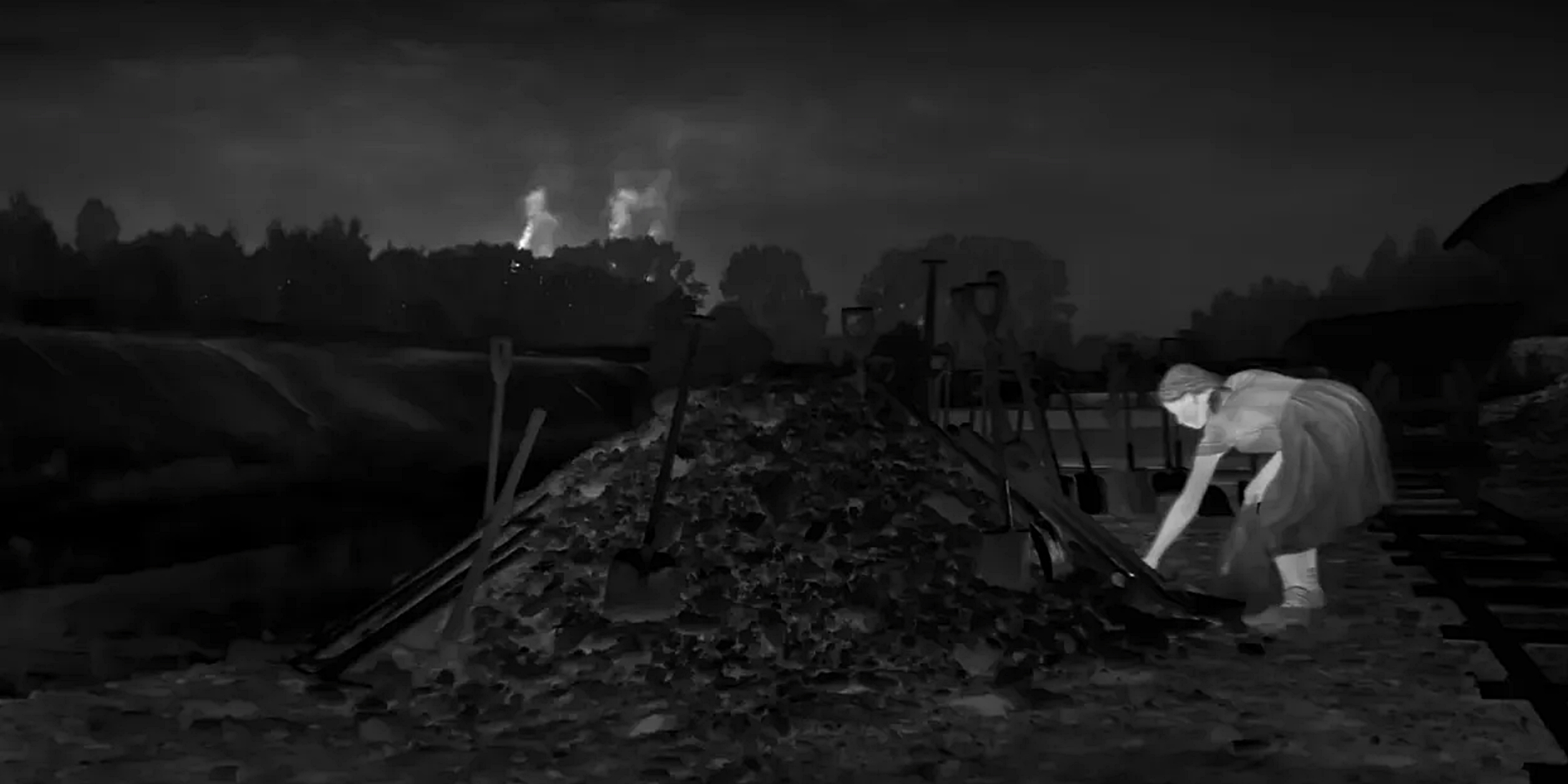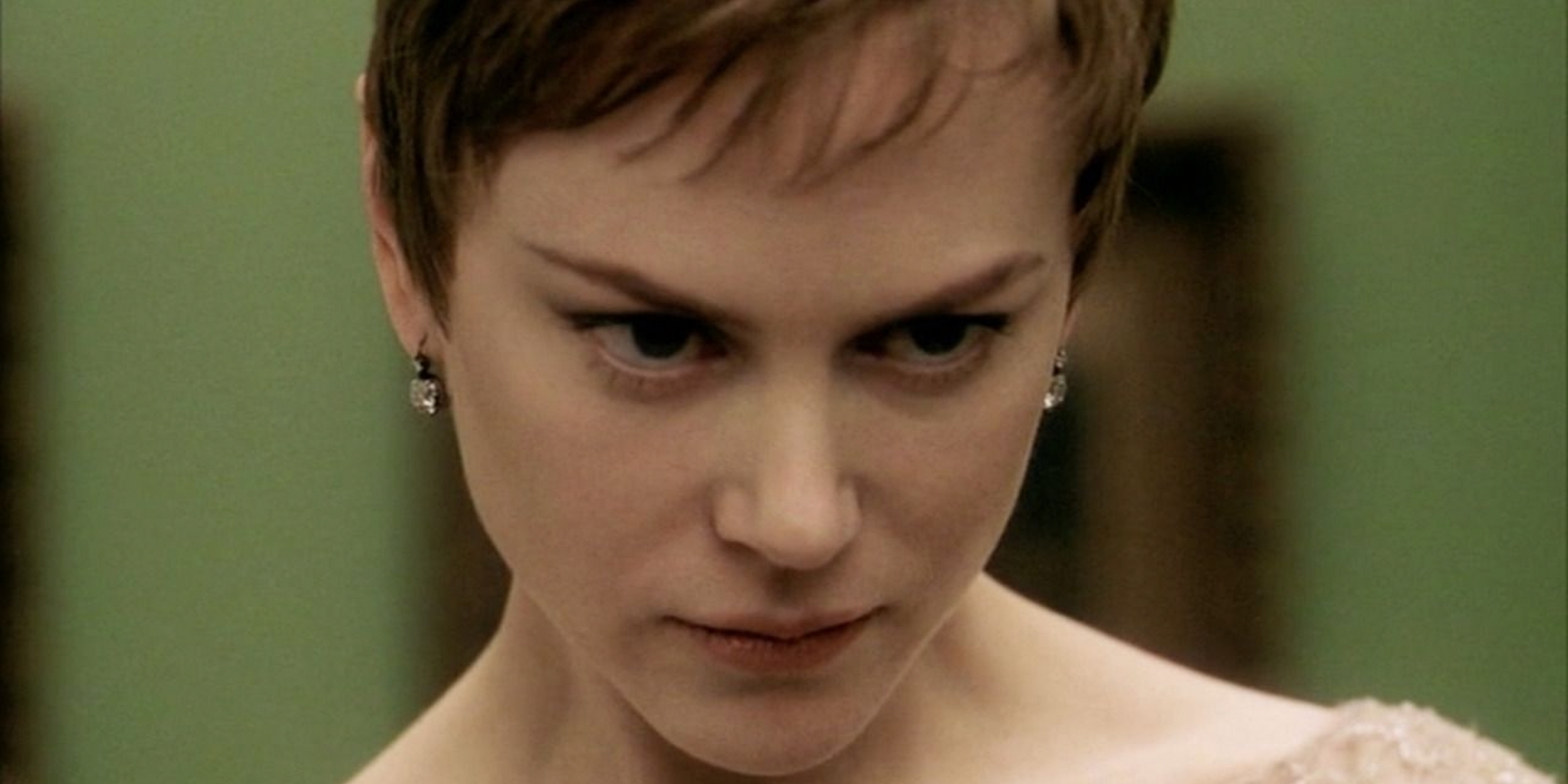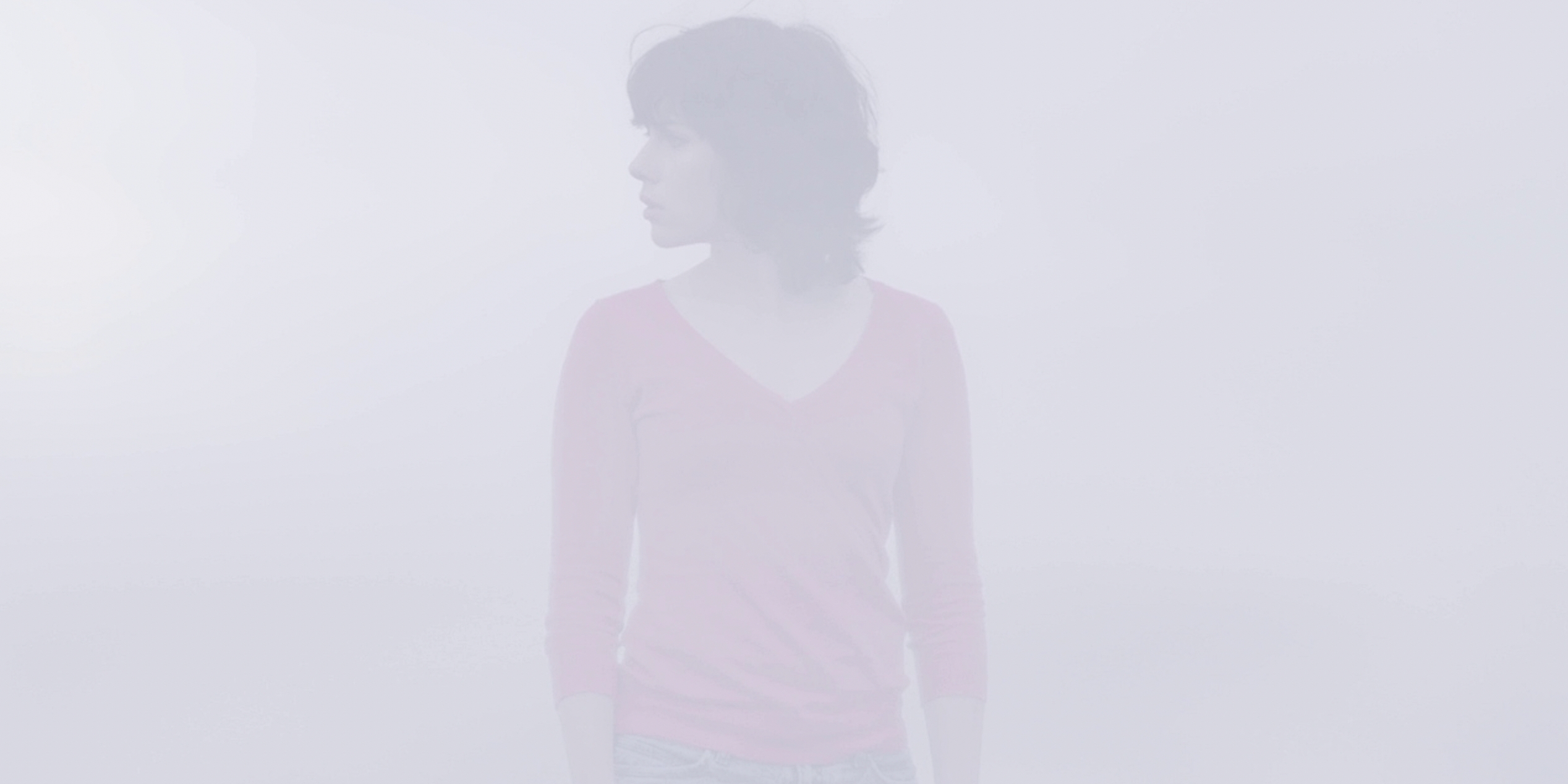“Thank you so much. I’m gonna read, I’m afraid. Thank you to the Academy for this honor and to our partners A24, Film4, Access, and Polish Film Institute. To the Auschwitz-Birkenau State Museum for their trust and guidance. To my producers, actors, collaborators. All our choices were made to reflect and confront us in the present, not to say, “Look what they did then,” rather, “Look what we do now.” Our film shows where dehumanization leads, at its worst. It shaped all of our past and present. Right now, we stand here as men who refute their Jewishness and the Holocaust being hijacked by an occupation which has led to conflict for so many innocent people. Whether the victims of October the- Whether the victims of October 7th in Israel or the ongoing attack on Gaza, all the victims of this dehumanization, how do we resist? Aleksandra Bystroń-Kołodziejczyk, the girl who glows in the film, as she did in life, chose to. I dedicate this to her memory and her resistance. Thank you.”
– Jonathan Glazer, March 10th, 2024
 Jonathan Glazer is a name that, until recently, was mostly familiar to people who paid attention to independent cinema. However, he has recently had the spotlight thrust upon him after his film, “The Zone of Interest,” won Best International Feature Film. Upon taking the stage, Glazer delivered a stirring statement highlighting the themes of complicity and dehumanization that are explored in his Holocaust-set film and tying them to the violent events of both October 7th in Israel and the ongoing attacks in Gaza. Perhaps unsurprisingly, this speech has become one of the most talked about moments of the night. Both condemnation and support have been aimed at Glazer, turning him into one of the most discussed film industry figures of the moment. And yet, his films can hardly be considered part of the zeitgeist, neither at the time of their release nor in retrospect. Unfortunately, many are now hearing his name for the first time because of a relatively tame call for peace that’s been painted as incendiary when those familiar with Glazer before the Oscars know him to be a filmmaker of immense creativity and intelligence. In fact, compared to some of the unorthodox ideas his films explore and the subversive images he’s put onscreen, his speech was surprisingly restrained. Having only made four feature films across the span of 22 years, Jonathan Glazer is a filmmaker who clearly puts as much care into what films he chooses to make and how he chooses to make them as he does into carefully choosing his words when given the chance to make a statement. Now is as good a time as any to look back at his four films, all of which can be called provocative to some degree, and explore the different ways they’ve all upended audiences’ expectations.
Jonathan Glazer is a name that, until recently, was mostly familiar to people who paid attention to independent cinema. However, he has recently had the spotlight thrust upon him after his film, “The Zone of Interest,” won Best International Feature Film. Upon taking the stage, Glazer delivered a stirring statement highlighting the themes of complicity and dehumanization that are explored in his Holocaust-set film and tying them to the violent events of both October 7th in Israel and the ongoing attacks in Gaza. Perhaps unsurprisingly, this speech has become one of the most talked about moments of the night. Both condemnation and support have been aimed at Glazer, turning him into one of the most discussed film industry figures of the moment. And yet, his films can hardly be considered part of the zeitgeist, neither at the time of their release nor in retrospect. Unfortunately, many are now hearing his name for the first time because of a relatively tame call for peace that’s been painted as incendiary when those familiar with Glazer before the Oscars know him to be a filmmaker of immense creativity and intelligence. In fact, compared to some of the unorthodox ideas his films explore and the subversive images he’s put onscreen, his speech was surprisingly restrained. Having only made four feature films across the span of 22 years, Jonathan Glazer is a filmmaker who clearly puts as much care into what films he chooses to make and how he chooses to make them as he does into carefully choosing his words when given the chance to make a statement. Now is as good a time as any to look back at his four films, all of which can be called provocative to some degree, and explore the different ways they’ve all upended audiences’ expectations.
Like many filmmakers who came up around the end of the 20th century, Glazer got his start in the world of music videos, including for such notable bands as Massive Attack, Blur, and Radiohead. He made his feature debut in 2001 with “Sexy Beast,” a film that could be reductively referred to as a “gangster flick.” But rather than being an exploration of the act of committing a crime, it spends most of its runtime following a retired crook named Gal (Ray Winstone) as he debates with himself and others over whether he should do one more job for an old associate. This Hamlet-like structure certainly goes against what many may have assumed about the film before seeing it. Even the title is deceptive and, as would become typical of Glazer, enigmatic. Is the titular “sexy beast” Gal himself, who is seen at the film’s opening in nothing but a Speedo? Does it refer to the strange, anthropomorphized rabbit that Gal envisions, seemingly symbolizing his guilt over his past actions? Or is the very world of crime that the film explores the sexy beast, both seductive and untamable?
Glazer makes a confident debut with “Sexy Beast,” already exhibiting the kinds of unexpected camera techniques and dreamy imagery that would become trademarks of his style. He pushes the camera through walls and earth, shirking the expectations of believability. The amount of coverage he employs is quietly impressive, capturing his characters from an appropriately excessive number of angles. He’s also unafraid of putting his camera in unusual places, including on doors and, at one point, seemingly from the point of view of a boulder, making the audience explicitly aware of the camera’s existence. Even still, this would prove to be the most straightforward feature of Glazer’s career thus far. His 2004 film “Birth” has the kind of unusual, boundary-pushing premise that falls right in line with Glazer’s sensibilities. Nicole Kidman (delivering one of her best performances) plays Anna, a woman whose husband, Sean, died unexpectedly ten years prior. One day, a strange ten-year-old boy (Cameron Bright) appears at her apartment building, seeks out Anna, and proclaims that he’s her deceased husband. Obviously, Anna and her family, including her new fiancé (Danny Huston), are immediately dismissive of, and even mock, the boy’s claims of reincarnation. However, as time goes on, the young Sean refuses to leave them alone, divulging facts and details that only the deceased Sean would know. Anna becomes obsessed with the idea that the boy is telling the truth, pushing the boundaries of a standard relationship with a child simply because she sees what she wants to see.
His 2004 film “Birth” has the kind of unusual, boundary-pushing premise that falls right in line with Glazer’s sensibilities. Nicole Kidman (delivering one of her best performances) plays Anna, a woman whose husband, Sean, died unexpectedly ten years prior. One day, a strange ten-year-old boy (Cameron Bright) appears at her apartment building, seeks out Anna, and proclaims that he’s her deceased husband. Obviously, Anna and her family, including her new fiancé (Danny Huston), are immediately dismissive of, and even mock, the boy’s claims of reincarnation. However, as time goes on, the young Sean refuses to leave them alone, divulging facts and details that only the deceased Sean would know. Anna becomes obsessed with the idea that the boy is telling the truth, pushing the boundaries of a standard relationship with a child simply because she sees what she wants to see.
Upon its release, the film attracted some level of controversy because of the interactions between Anna and Sean. Although nothing explicit is ever shown nor implied in the screenplay, one scene of the two sharing a bath and another of a brief kiss between them was a bridge too far for some. In the context of the film, they show just how disoriented Anna is, lost in her hope of being reunited with her lost love. In fact, the film’s brilliance lies in how Glazer uses filmmaking methods to make the audience believe in the impossible, just like Anna. Most obviously, he employs a grandiose musical score by Alexandre Desplat that sounds like nothing else in Glazer’s filmography. The swirling, dreamy melodies, making heavy use of hypnotizing strings and dramatic drums, transport the audience to a fantastical world akin to a fairy tale. The movie also opens with the adult Sean dropping dead after a run, which then cuts directly to a shot of a baby – presumably the young Sean – being born. Using the language of editing, Glazer immediately places viewers in Anna’s mind before we’ve even met her, tying the death and rebirth together. Smaller choices, like the fanciful cursive font employed for the title and interstitial cards, make the audience think they’re watching the type of film where a soul being transported into the body of a little boy is possible. All these directorial decisions make the conclusion even more heartbreaking. The film is a brilliant piece of forced perspective, thanks to Glazer’s focused perspective and ability to use imagery and technique to deftly manipulate viewers’ perceptions. As far as “explicit” films go, few come close to Glazer’s following piece, “Under the Skin.” Especially for more close-minded American audiences, any depiction of sex can be considered controversial. This film takes things even further than most, with full nudity, erections, and sexual assault all featured prominently. But to less easily upset or non-prurient audiences, all these elements serve specific thematic or narrative purposes and are never employed for pure titillation.
As far as “explicit” films go, few come close to Glazer’s following piece, “Under the Skin.” Especially for more close-minded American audiences, any depiction of sex can be considered controversial. This film takes things even further than most, with full nudity, erections, and sexual assault all featured prominently. But to less easily upset or non-prurient audiences, all these elements serve specific thematic or narrative purposes and are never employed for pure titillation.
“Under the Skin” follows a mysterious alien entity credited only as “The Female” (Scarlett Johansson) who preys upon random Scottish men via seduction before consuming them. Glazer employs his most audacious filmmaking abilities yet to depict the alien’s methods of trapping and destroying these men. The cold, deliberate pace, void-like settings, and eerie score by Mica Levi all draw a direct comparison to the later works of Stanley Kubrick, a filmmaker who’s been a hugely influential force on Glazer’s artistic sensibilities.
Even though it depicts an extraterrestrial being with powers well beyond our earthly understanding, “Under the Skin” tells a very human tale about identity and self-realization. The Female preys upon men’s basest reproductive instincts, exploiting the ways that they will blind themselves to obvious danger if the opportunity for sex arises. Although substantive details are never revealed, these men appear to be merely meat for the alien’s proverbial grinder. However, upon a chance encounter with a lonely man, the alien takes pity and releases him from its grip, causing the alien to flee from the motorcycle-driving fellow extraterrestrial who appears to have some sort of authority. The Female embarks on a literal journey of self-discovery, where we see it examining its naked body and interacting with men, both well-meaning and not. As usual, Glazer is ambiguous in his messaging, but this character’s trajectory can be interpreted as an examination of the freedom that comes from shirking the expectations and requirements of one’s assigned gender. Although named The Female, the alien is a genderless being who just so happens to be suited in a feminine uniform. But once it removes itself from the expected pattern of seduction and exploitation, it can move beyond the boundaries of its limited habitation. And yes, to tell this story, Glazer is unafraid of using unobstructed images of nudity and sexuality (so much so that it is surprising that the American MPA gave the film an R-rating rather than an NC-17), which may simply be too much for audiences unaccustomed to challenging art that shatters expectations. The 2023 Cannes Film Festival saw the premiere of Glazer’s masterpiece “The Zone of Interest.” After nearly a decade away from cinemas, the film received the highest acclaim of Glazer’s career, including the Grand Prix prize at Cannes and countless award nominations and wins. It even went on to garner five Academy Award nominations, including Best Picture, with Glazer himself finally receiving Oscar recognition with his nominations for Best Director and Best Adapted Screenplay. All these plaudits and accolades may seem like a surprise, not only given the trajectory of Glazer’s career and the specific appeal of his films but also because of the content and style of the film itself.
The 2023 Cannes Film Festival saw the premiere of Glazer’s masterpiece “The Zone of Interest.” After nearly a decade away from cinemas, the film received the highest acclaim of Glazer’s career, including the Grand Prix prize at Cannes and countless award nominations and wins. It even went on to garner five Academy Award nominations, including Best Picture, with Glazer himself finally receiving Oscar recognition with his nominations for Best Director and Best Adapted Screenplay. All these plaudits and accolades may seem like a surprise, not only given the trajectory of Glazer’s career and the specific appeal of his films but also because of the content and style of the film itself.
Set in 1943, the film follows the Höss family, including patriarch Rudolf (Christian Friedel) and his wife Hedwig (Sandra Hüller). Rudolf was the real-life commandant of the Auschwitz concentration camp, and most of the film takes place inside and directly outside of their family home right on the edge of the camp. We watch the family go about their daily life, with the children playing and Hedwig tending to her garden. But throughout the entire film, the sounds of the nearby camp are ever-present. Gunshots, screams, and the unceasing rumble of the crematoria form the soundtrack to the film. The Höss family operates as if they can’t hear it, and after the film goes on for long enough, the audience itself becomes just as desensitized to the sound. It’s a bold and shocking decision on Glazer’s part, using the most basic tools of cinema to make a point about the ease with which humans can adapt to any number of atrocities if they become routine.
It’s clear that “The Zone of Interest” is making a statement about the same perils of dehumanization that Glazer called out in his Oscar speech. And thus, the biggest critics of what he said, regardless of what they thought of the film, were happy to view “The Zone of Interest” as merely a period piece that reflects the worst atrocities of the Holocaust. But Glazer has never been a typical filmmaker. As his past work shows, his films always have something surprising and, oftentimes, shocking lying under the surface.
“The Zone of Interest” concludes in the most unexpected way. Rudolf has been sent to Berlin and, after an excited phone call with Hedwig where he tells her that an extermination plan of his will be put into effect, he’s shown descending a staircase in a Nazi administrative building. He pauses, vomits twice, and then turns to look into the dark void of the unlit hallways. The film then jumps to a shot from inside one of the Auschwitz buildings – the first time the camera physically enters the concentration camp. As workers enter the room, it quickly becomes apparent that this is a glimpse into the future of the camp in its current state as a museum. Workers are shown cleaning the various rooms where the mass murder was carried out, along with exhibit cases that hold the belongings of the victims, including suitcases and shoes. It abruptly cuts back to Rudolf, who appears to have somehow seen this vision. He then continues descending the stairs into the darkness of a pitch-black lower level. This time, the jump is jolting and chilling. Even if it’s unclear what specifically Glazer intends audiences to take away from the moment, the effect is startling and forces reflection. It’s a choice that gives way to dozens of interpretations, but what’s abundantly clear is that Glazer is drawing a direct line from the actions of Höss in the past and showing how they reverberate into the future. And by making an abrupt leap to the present day, he indicates that we must continually look to the horrors of the past to inform our actions, lest we let history be just a story we tell rather than a parable from which to learn. “The Zone of Interest” is an alarm bell ringing in the past and echoing in the present. It’s a perfect example of what Jonathan Glazer does best as a director – he uses film as both an art form and an instructive tool to shatter his audience’s expectations of what’s possible in cinema. May he continue to make brave, singular statements, both with his camera and his words.


